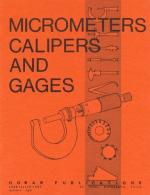|
This section contains 200 words (approx. 1 page at 300 words per page) |
The industrial micrometer traces its origin to an astronomical micrometer invented by William Gascoigne (1612-1644) in 1639. Gascoigne's invention was designed specifically for use with telescopes and consisted of a screw-adjusting device which enabled the approximate measurement of celestial bodies. Greek theoretician Archimedes may have been the first to propose such a device in theory.
Following Gascoigne's lead, Scottish industrialist James Watt developed a pocket micrometer for his personal use in 1772. The true pioneer in micrometer design, however, was Henry Maudslay, also known for perfecting the screw-cutting lathe. Around 1805 Maudslay successfully tested a bench micrometer, which he named the Lord Chancellor. The Lord Chancellor featured a gunmetal bed, one movable and one stationary anvil, an adjusting screw with 100 threads per inch, and a graduated scale. It boasted precise measurements to within 0.0001 inch.
Since Maudslay's time, micrometers have been developed to increasingly exacting standards. In 1835 British engineer Joseph Whitworth developed a comparator to ensure uniformity of yard lengths; the device was accurate to 0.000001 inch. One of the most recent developments in micrometers--which have come to mean all devices capable of precise measurement in small units--is a hand-held micrometer that measures electronically, through diffraction grating. This device was first introduced in 1973.
|
This section contains 200 words (approx. 1 page at 300 words per page) |


